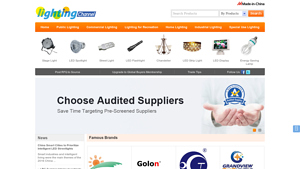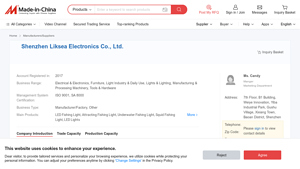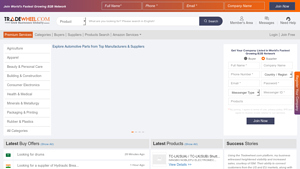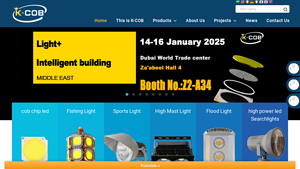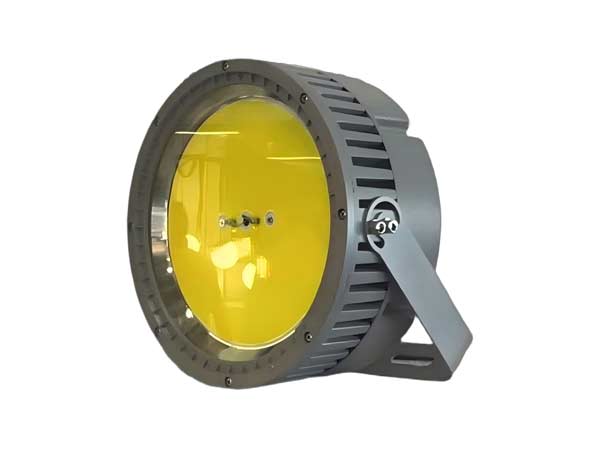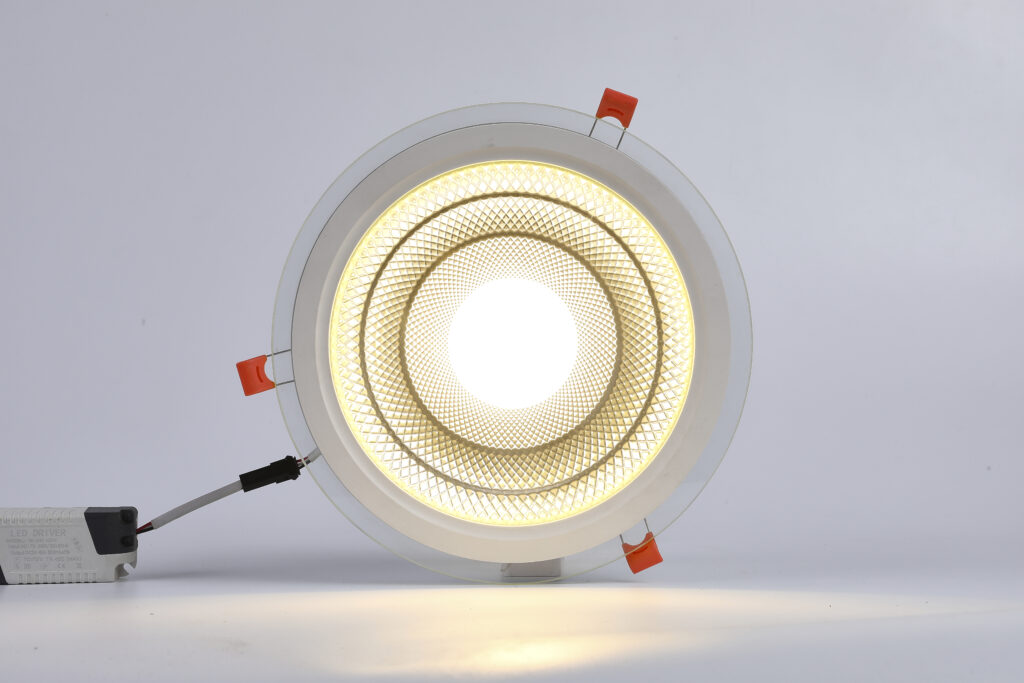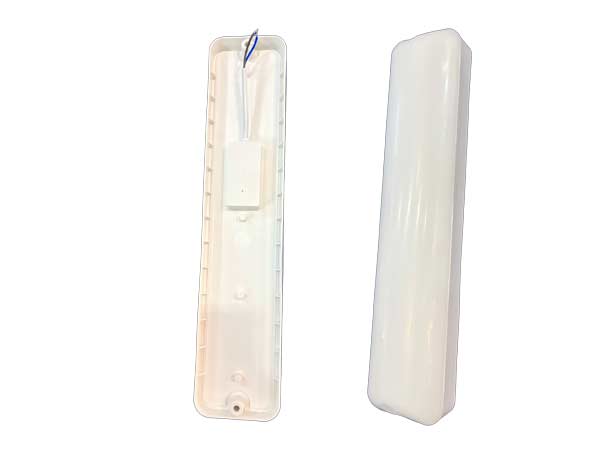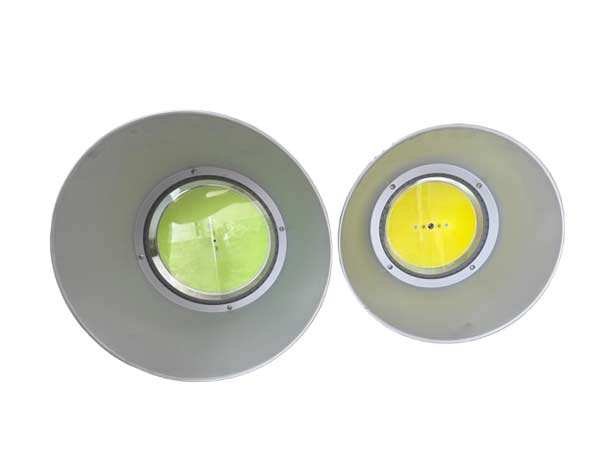Article Navigation
- Introduction: Navigating the Global Market for China Fishing Light Factory
- Understanding China Fishing Light Factory Types and Variations
- Key Industrial Applications of China Fishing Light Factory
- Strategic Material Selection Guide for China Fishing Light Factory
- In-depth Look: Manufacturing Processes and Quality Assurance for China Fishing Light Factory
- Comprehensive Cost and Pricing Analysis for China Fishing Light Factory Sourcing
- Spotlight on Potential China Fishing Light Factory Manufacturers and Suppliers
- Essential Technical Properties and Trade Terminology for China Fishing Light Factory
- Navigating Market Dynamics, Sourcing Trends, and Sustainability in the China Fishing Light Factory Sector
- Frequently Asked Questions (FAQs) for B2B Buyers of China Fishing Light Factory
- Important Disclaimer & Terms of Use
- Strategic Sourcing Conclusion and Outlook for China Fishing Light Factory
Introduction: Navigating the Global Market for China Fishing Light Factory
In the ever-evolving landscape of global trade, the demand for specialized fishing equipment, particularly fishing lights, has surged significantly. As international B2B buyers, particularly from Africa, South America, the Middle East, and Europe, seek to optimize their sourcing strategies, understanding the dynamics of the China Fishing Light Factory market becomes paramount. This guide serves as a comprehensive resource, illuminating the pathways to successful procurement and partnership in this niche yet vital sector.
Fishing lights are essential tools that enhance visibility and attract marine life, making them indispensable for commercial fishing operations. The increasing focus on sustainable fishing practices and the need for efficient equipment further amplify their importance. However, navigating the myriad options available can be daunting, given the variety of products, manufacturers, and technologies in play.
This guide empowers B2B buyers by offering detailed insights into the Chinese fishing light manufacturing landscape, including market trends, key suppliers, quality standards, and logistical considerations. We aim to equip you with the knowledge necessary to make informed sourcing decisions, ensuring that your investments yield maximum returns while aligning with your operational goals. By leveraging the insights provided here, you can effectively tap into the potential of the China Fishing Light Factory market and enhance your competitive edge in the global fishing industry.
Understanding China Fishing Light Factory Types and Variations
| Type Name | Key Features | Primary B2B Applications | Pros | Cons |
|---|---|---|---|---|
| LED Fishing Lights | Energy-efficient, long lifespan, low heat output | Commercial fishing, recreational boating | High brightness, low energy consumption | Initial cost can be higher than traditional lights |
| Halogen Fishing Lights | High-intensity light, robust construction | Night fishing, underwater exploration | Strong illumination, good color rendering | Shorter lifespan, higher energy consumption |
| Solar-Powered Lights | Eco-friendly, rechargeable, portable | Sustainable fishing operations, camping | Cost-effective in long-term use, eco-friendly | Performance can be affected by weather |
| Incandescent Lights | Simple design, affordable | Small-scale fishing, DIY projects | Low initial investment, widely available | Inefficient energy use, short lifespan |
| Underwater LED Lights | Waterproof, customizable colors | Attracting fish, underwater photography | Enhances visibility, attracts marine life | Can be more expensive than above-water options |
LED Fishing Lights
LED fishing lights are among the most popular options available due to their energy efficiency and longevity. They emit a bright light while consuming significantly less power compared to traditional lighting solutions. These lights are particularly useful in commercial fishing and recreational boating, where long hours of operation are typical. The initial investment may be higher, but the reduced energy costs and longer lifespan often justify the expense.
Halogen Fishing Lights
Halogen lights are known for their intense brightness and durability, making them ideal for night fishing and underwater exploration. They provide excellent color rendering, allowing fishermen to see clearly in dark conditions. However, they consume more energy and have a shorter lifespan than LED alternatives. This type of light is suitable for businesses that prioritize performance over energy efficiency.
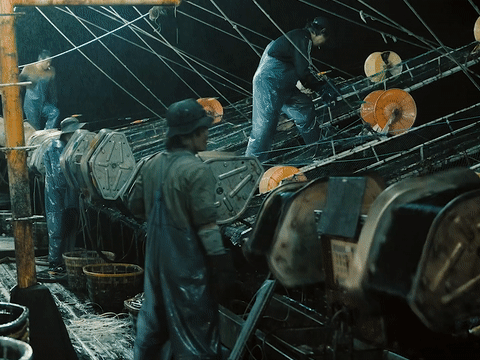
Illustrative Image (Source: Google Search)
Solar-Powered Lights
Solar-powered fishing lights are an excellent choice for businesses focused on sustainability. These lights harness solar energy, making them cost-effective in the long run. They are portable and perfect for fishing operations that operate in remote areas without access to electricity. However, their performance can be inconsistent in cloudy weather or during long periods without sunlight, which may limit their applicability.
Incandescent Lights
Incandescent fishing lights are simple and affordable, making them a go-to option for small-scale fishing or DIY projects. They are widely available and require minimal upfront investment. However, they are less energy-efficient and have a shorter lifespan compared to LED and halogen lights. For businesses that operate on a tight budget and do not require prolonged use, incandescent lights can be a viable option.
Underwater LED Lights
Underwater LED lights are designed specifically for use in aquatic environments, offering waterproof features and customizable colors. They are particularly effective for attracting fish and enhancing underwater visibility, making them popular among anglers and underwater photographers. While they may come with a higher price tag than above-water options, their specialized applications can provide significant value in commercial fishing and recreational use.
Key Industrial Applications of China Fishing Light Factory
| Industry | Specific Application | Business Value | Sourcing Considerations |
|---|---|---|---|
| Commercial Fishing | LED Fishing Lights for Trawlers | Enhances catch rates by attracting fish, leading to higher yields. | Quality of light, energy efficiency, and durability are key. |
| Aquaculture | Underwater Lighting for Fish Farms | Promotes growth and health of fish, improving overall productivity. | Consider local regulations on light usage in water bodies. |
| Recreational Fishing | Portable Fishing Lights for Anglers | Increases visibility and catch success for sport fishing enthusiasts. | Look for lightweight, battery-operated options for ease of transport. |
| Marine Research | Research Lighting for Underwater Studies | Facilitates marine biology studies by allowing observation in dark environments. | Ensure compatibility with research equipment and safety standards. |
| Environmental Monitoring | Lighting for Eco-Friendly Fishing Practices | Supports sustainable practices by reducing bycatch and environmental impact. | Assess the sustainability of materials and energy sources used. |
Detailed Applications
Commercial Fishing
In the commercial fishing sector, LED fishing lights are indispensable tools for trawlers. These lights attract fish, particularly during nighttime operations, significantly increasing catch rates. As a B2B buyer, investing in high-quality, energy-efficient lighting solutions can enhance operational efficiency and ultimately lead to higher profits. Buyers should prioritize manufacturers that offer durable products capable of withstanding harsh marine conditions.
Aquaculture
Underwater lighting in aquaculture plays a vital role in the growth and health of farmed fish. By mimicking natural light conditions, these lights can stimulate feeding behavior and promote a healthier environment for aquatic life. For international buyers, it is essential to consider local regulations regarding light usage in fish farms to ensure compliance and optimize fish production.
Recreational Fishing
For the recreational fishing industry, portable fishing lights are a popular choice among anglers. These lights provide enhanced visibility in low-light conditions, improving catch success rates. B2B buyers should focus on lightweight, battery-operated models that are easy to transport. The convenience of these lights can attract a broader customer base, making them a valuable addition to product lines.
Marine Research
In the realm of marine research, specialized research lighting aids in underwater studies by illuminating dark areas for observation. This application is crucial for marine biologists who need to conduct studies on fish behavior, habitats, and ecosystems. Buyers should ensure that the lighting solutions are compatible with existing research equipment and adhere to safety standards, facilitating effective research outcomes.
Environmental Monitoring
Lighting technologies that support eco-friendly fishing practices are increasingly important in today’s sustainable fishing environment. These lights can help reduce bycatch and minimize the environmental impact of fishing operations. B2B buyers should assess the sustainability of the materials and energy sources used in the manufacturing of these lights, aligning with global trends toward more responsible fishing practices.
Strategic Material Selection Guide for China Fishing Light Factory
When selecting materials for fishing lights manufactured in China, international B2B buyers must consider several factors that impact performance, durability, and cost. Below, we analyze four common materials used in the production of fishing lights, detailing their properties, advantages, disadvantages, and applications.
1. Polycarbonate
Properties:
Polycarbonate is a high-performance thermoplastic known for its excellent impact resistance and transparency. It can withstand extreme temperatures and offers good UV resistance, making it suitable for outdoor applications.
Pros:
- Durability: Highly resistant to impact, reducing the risk of breakage.
- Lightweight: Easier to handle and transport compared to glass alternatives.
- UV Protection: Helps in preventing yellowing and degradation over time.
Cons:
- Scratch Susceptibility: While strong, polycarbonate can scratch more easily than glass.
- Chemical Sensitivity: Certain chemicals can damage polycarbonate, limiting its use in some environments.
Application Impact:
Ideal for outdoor fishing lights, polycarbonate enhances product longevity and user safety by reducing breakage risks.
2. Aluminum
Properties:
Aluminum is a lightweight, corrosion-resistant metal that offers good strength-to-weight ratio and thermal conductivity. It is often anodized for additional protection against oxidation.
Pros:
- Corrosion Resistance: Excellent for marine environments where exposure to saltwater is common.
- Lightweight: Reduces overall weight, making the lights easier to install and manage.
- Thermal Conductivity: Facilitates efficient heat dissipation, enhancing LED performance.
Cons:
- Cost: Can be more expensive than plastics, affecting overall product pricing.
- Denting: While strong, aluminum can be prone to dents upon impact.
Application Impact:
Aluminum is particularly beneficial for rugged, portable fishing lights, ensuring durability while maintaining a lightweight design.
3. Glass
Properties:
Glass offers high transparency and excellent optical clarity, making it a popular choice for applications requiring clear visibility. It is also chemically inert and resistant to UV radiation.
Pros:
- Optical Clarity: Provides superior light transmission and minimal distortion.
- Chemical Resistance: Not affected by most chemicals, ensuring longevity.
- Scratch Resistance: Generally more resistant to scratches compared to polycarbonate.
Cons:
- Weight: Heavier than plastic alternatives, which can complicate transportation and installation.
- Fragility: Prone to shattering upon impact, posing safety risks.
Application Impact:
Glass is suitable for fixed installations where light clarity is paramount, but its fragility limits its use in portable applications.
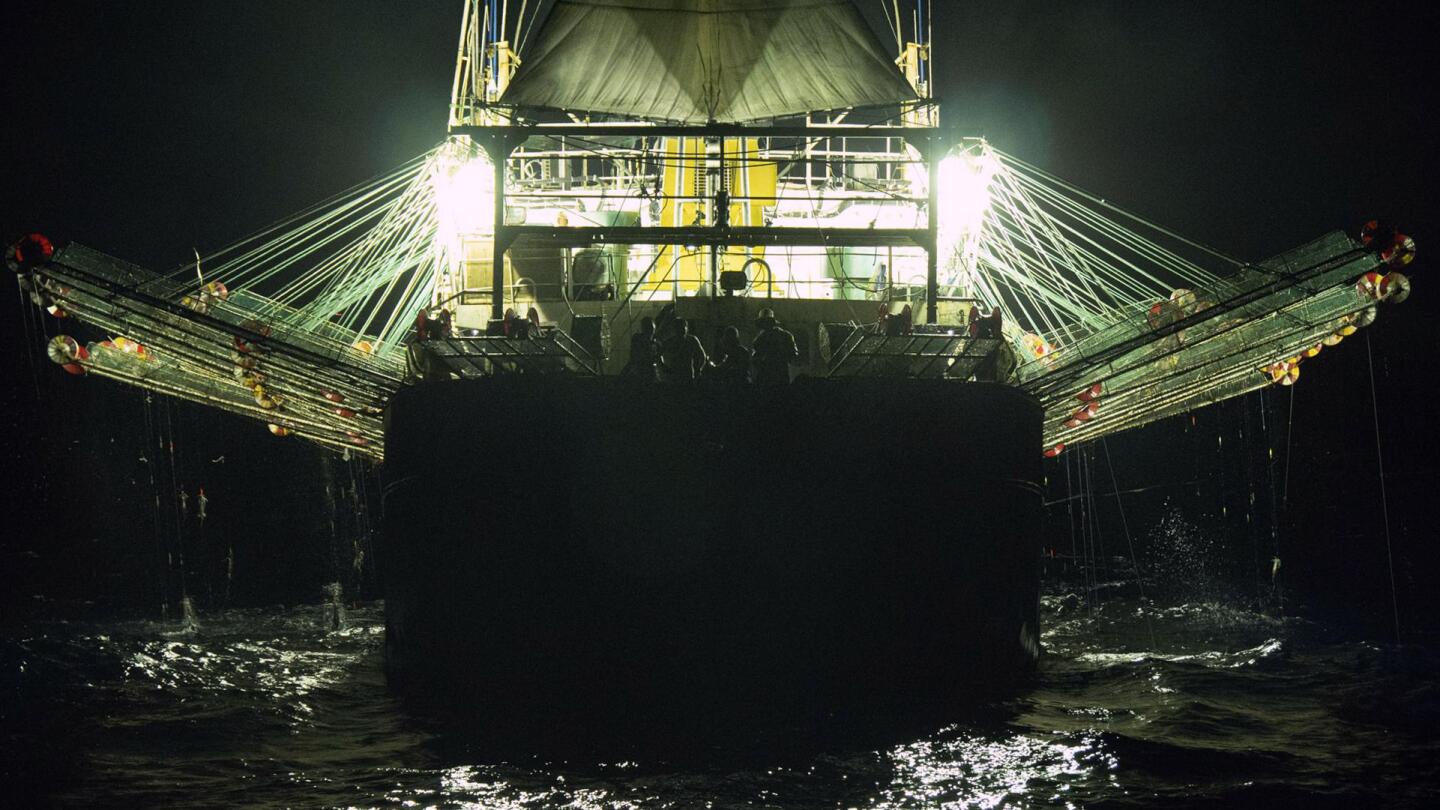
Illustrative Image (Source: Google Search)
4. Silicone
Properties:
Silicone is a synthetic elastomer known for its flexibility, weather resistance, and heat stability. It can be used in various forms, including seals and coatings for fishing lights.
Pros:
- Flexibility: Can accommodate different designs and shapes, enhancing product versatility.
- Weather Resistance: Excellent for outdoor use, providing protection against moisture and extreme temperatures.
- Durability: Resistant to aging and degradation, maintaining performance over time.
Cons:
- Cost: Typically more expensive than traditional plastics.
- Limited Structural Strength: Not suitable as a primary structural material for lights.
Application Impact:
Silicone is ideal for gaskets and protective coatings, ensuring fishing lights remain waterproof and functional in harsh environments.
Summary Table
| Material | Use Case | Advantage | Disadvantage | Relative Cost |
|---|---|---|---|---|
| Polycarbonate | Outdoor fishing lights | Durable and lightweight | Susceptible to scratches | Medium |
| Aluminum | Portable and rugged lights | Corrosion resistant | Higher cost | High |
| Glass | Fixed installations | Superior optical clarity | Heavy and fragile | Medium |
| Silicone | Seals and protective coatings | Flexible and weather resistant | Limited structural strength | Medium |
Understanding these materials will empower international B2B buyers to make informed decisions that align with their operational needs and market demands, ultimately enhancing their product offerings in the fishing light industry.
In-depth Look: Manufacturing Processes and Quality Assurance for China Fishing Light Factory
The manufacturing process for fishing lights in China is a multifaceted operation that combines advanced technology with stringent quality control measures. For international B2B buyers, particularly those from Africa, South America, the Middle East, and Europe, understanding these processes is crucial for ensuring product quality and reliability. Below is a detailed overview of the typical manufacturing stages, key techniques employed, and the quality assurance practices that define a reputable fishing light factory in China.
Manufacturing Processes
1. Design and Prototyping
The manufacturing journey begins with the design phase, where engineers and designers collaborate to create prototypes. This stage involves:
- CAD Modeling: Computer-Aided Design (CAD) software is used to create detailed models of the fishing lights.
- Material Selection: Choosing the appropriate materials (e.g., waterproof plastics, LED components) that meet specific performance requirements.
- Prototyping: Rapid prototyping techniques, such as 3D printing, are employed to create initial samples for testing.
2. Component Sourcing
After finalizing designs, the factory sources components from various suppliers. Key considerations include:
- Supplier Evaluation: Ensuring suppliers meet quality and reliability standards.
- Material Certifications: Verifying that materials comply with international regulations, such as RoHS (Restriction of Hazardous Substances).
3. Assembly Line Production
The main manufacturing phase occurs on assembly lines, where various components are put together. This process typically includes:
- Automated Assembly: Utilizing machines for tasks such as soldering and component placement to improve efficiency and precision.
- Manual Assembly: Skilled workers assemble delicate parts, ensuring careful handling of sensitive components.
4. Finishing Processes
Once assembled, fishing lights undergo finishing processes to enhance durability and aesthetics:
- Coating: Application of protective coatings to improve water resistance and UV protection.
- Labeling and Packaging: Products are labeled according to compliance standards and packaged for shipment.
5. Final Assembly
In this stage, final touches are made:
- Functional Testing: Each unit is tested for functionality, ensuring all components operate as intended.
- Quality Inspections: Visual inspections are performed to identify any cosmetic defects.
Quality Assurance Protocols
Quality assurance is a critical aspect of the manufacturing process, especially for B2B buyers who require reliable products. Chinese fishing light factories often adhere to international quality standards, including ISO 9001. Here’s a closer look at the quality assurance practices involved:
International Standards
- ISO 9001: This standard focuses on quality management systems and ensures consistent quality in production. Factories certified under ISO 9001 demonstrate their commitment to quality through structured processes and continuous improvement.
Quality Control Checkpoints
Quality control is integrated throughout the manufacturing process, with several key checkpoints established to maintain high standards:
-
Incoming Quality Control (IQC)
- At this stage, raw materials and components are inspected upon arrival. Key activities include:
- Material Verification: Checking certifications and specifications against purchase orders.
- Dimensional Inspection: Measuring components to ensure they meet design specifications.
- At this stage, raw materials and components are inspected upon arrival. Key activities include:
-
In-Process Quality Control (IPQC)
- This checkpoint occurs during the assembly process, where continuous monitoring ensures that manufacturing defects are identified early. Techniques include:
- Process Audits: Regular checks on manufacturing processes to ensure adherence to protocols.
- Statistical Process Control (SPC): Utilizing statistical methods to monitor and control the production process.
- This checkpoint occurs during the assembly process, where continuous monitoring ensures that manufacturing defects are identified early. Techniques include:
-
Final Quality Control (FQC)
- Before shipping, finished products undergo comprehensive testing:
- Functionality Tests: Each fishing light is tested under various conditions to ensure operational performance.
- Environmental Testing: Products are subjected to stress tests, such as humidity and temperature variations, to assess durability.
- Before shipping, finished products undergo comprehensive testing:
Common Testing Methods
To ensure the highest quality, several testing methods are employed during and after production:
- Electrical Testing: Verifying the integrity of electrical components to prevent failures.
- Water Resistance Testing: Assessing the product’s ability to withstand water exposure, crucial for fishing lights.
- Safety Testing: Ensuring compliance with electrical safety standards, preventing hazards during use.
Verifying Quality Control
For international buyers, verifying the quality control practices of a Chinese fishing light factory is essential. Here are actionable steps:
- Request Certifications: Ask for copies of relevant certifications, such as ISO 9001, and ensure they are up-to-date.
- Factory Audits: Consider conducting on-site audits or hiring third-party inspection services to evaluate manufacturing practices.
- Product Samples: Request samples before placing large orders to assess quality firsthand.
- Communication: Maintain open lines of communication with suppliers to address any concerns regarding quality and production timelines.
Conclusion
Understanding the manufacturing processes and quality assurance practices of fishing light factories in China is vital for international B2B buyers. By being informed about the key stages of production, quality checkpoints, and testing methods, buyers can make better purchasing decisions that align with their quality expectations and market demands. As global competition increases, ensuring product reliability through diligent quality control will be a decisive factor in the success of fishing light exports from China.
Comprehensive Cost and Pricing Analysis for China Fishing Light Factory Sourcing
In the landscape of international B2B sourcing, understanding the cost structure and pricing dynamics of a China-based fishing light factory is essential for buyers from regions such as Africa, South America, the Middle East, and Europe. This analysis delves into the various cost components, price influencers, and provides actionable tips for successful negotiations.
Cost Structure
-
Materials: The cost of raw materials significantly impacts the overall pricing of fishing lights. These materials typically include LEDs, housing (often aluminum or plastic), lenses, and wiring. Prices can fluctuate based on global supply chain conditions, availability, and quality specifications. Buyers should consider sourcing from multiple suppliers to compare costs and ensure quality.
-
Labor: Labor costs in China are generally lower than in many Western countries, but they can vary by region and factory size. Skilled labor, especially for assembly and quality control, can command higher wages. Understanding the labor landscape can help buyers gauge the potential for production delays or quality issues. Factories in more developed regions may offer higher quality but at increased labor costs.
-
Overhead: This includes factory operational costs such as utilities, rent, and administrative expenses. Overhead costs can vary widely depending on the factory’s location and scale. Larger factories may benefit from economies of scale, which can lead to lower overhead per unit produced.
-
Quality Control (QC): Implementing a robust QC process is crucial to ensure that the fishing lights meet international standards. The cost of quality control can be a significant portion of the total cost, especially if third-party inspections are involved. Buyers should inquire about the QC processes in place and consider incorporating QC costs into their total cost calculations.
-
Logistics: Shipping costs can vary based on the mode of transport (air, sea, or land), distance, and current freight rates. Additionally, customs duties and tariffs may apply, depending on the importing country. Buyers should factor these costs into their overall pricing strategy to avoid unexpected expenses.
Price Influencers
Several factors can influence the final pricing of fishing lights:
-
Volume: Ordering in bulk typically allows buyers to leverage better pricing. Factories may offer discounts based on order volume, which can significantly reduce the per-unit cost.
-
Specifications: Customizing products with specific features or designs can increase costs. Buyers should carefully assess their requirements and balance customization against budget constraints.
-
Quality: Higher quality materials and advanced manufacturing processes will generally lead to higher prices. It’s essential to define quality expectations clearly and evaluate if the additional cost aligns with the intended use of the fishing lights.
Buyer Tips
-
Negotiation: Effective negotiation is key to securing favorable pricing. Buyers should prepare by understanding the market rates and the factory’s cost structure. Being transparent about expectations while remaining flexible can foster a more cooperative relationship.
-
Total Cost of Ownership (TCO): Beyond the initial purchase price, buyers should calculate the TCO, which includes maintenance, warranty, and potential replacement costs. Understanding the TCO will help in assessing the value of the investment in fishing lights and making informed purchasing decisions.
-
Supplier Relationships: Building a long-term relationship with suppliers can lead to better pricing and terms over time. Regular communication and feedback can enhance trust and collaboration, ultimately benefiting both parties.
By comprehensively analyzing the cost structure and pricing factors associated with sourcing fishing lights from China, international B2B buyers can make informed decisions that align with their budget and quality expectations. This strategic approach not only helps in negotiating better prices but also ensures a sustainable and profitable sourcing experience.
Spotlight on Potential China Fishing Light Factory Manufacturers and Suppliers
This section looks at several manufacturers active in the ‘China Fishing Light Factory’ market. This is a representative sample for illustrative purposes; B2B buyers must conduct extensive due diligence.
Lighting – 4.1 192 ·
Fishing Light is a prominent supplier within the fishing industry, specializing in high-quality lighting solutions manufactured in China. Their product range likely includes LED fishing lights, underwater lights, and portable lighting options designed to enhance the fishing experience. With a focus on durability and efficiency, Fishing Light aims to meet the diverse needs of international B2B buyers, particularly in regions such as Africa, South America, the Middle East, and Europe.
- …
Fishinglight – We are specilized in manufacturing the
Shenzhen Liksea Electronics Co., Ltd. specializes in the production of LED fishing lights, aimed at enhancing the fishing experience by attracting fish effectively. As a prominent player in the China fishing light industry, the company likely emphasizes innovation, energy efficiency, and durability in its product offerings, catering to both recreational and commercial fishing markets. Their commitment to quality positions them as a reliable supplier for international B2B buyers.
- …
Tradewheel – Connect with 188 manufacturers and suppliers
China Fishing Lights Suppliers and Wholesalers – TradeWheel is a leading supplier specializing in high-quality fishing lights manufactured in China. With a focus on innovation and reliability, they offer a diverse range of products designed for various fishing needs, including LED and solar-powered options. Their strengths lie in competitive pricing, robust supply chain management, and a commitment to meeting international quality standards, making them a preferred choice for B2B buyers worldwide.
- …
Kcobled – Fishing Light Manufacturers, Factory, Suppliers From
K-COB LED, a prominent supplier within the China Fishing Light Factory sector, specializes in high-quality LED lighting solutions tailored for fishing applications. With a commitment to innovation and durability, K-COB LED offers a diverse range of fishing lights designed to enhance visibility and efficiency in various aquatic environments. Their expertise in advanced LED technology positions them as a reliable partner for international buyers seeking effective lighting solutions for fishing operations.
- …
Essential Technical Properties and Trade Terminology for China Fishing Light Factory
When engaging with a China fishing light factory, international B2B buyers should familiarize themselves with the essential technical properties and industry terminology relevant to fishing lights. Understanding these factors can facilitate smoother negotiations and ensure that buyers procure the right products for their needs.
Key Technical Properties of Fishing Lights
-
Lumen Output:
- Lumen output measures the total amount of visible light emitted by the fishing light. A higher lumen rating indicates a brighter light, which is crucial for attracting fish. For instance, fishing lights can vary from 500 to over 10,000 lumens, depending on the intended use (e.g., deep-sea fishing vs. shallow water).
-
Color Temperature:
- Measured in Kelvin (K), color temperature affects how light appears to the eye. Fishing lights typically range from warm white (2700K) to cool white (6000K). Different color temperatures can attract different species of fish, with some preferring cooler tones.
-
Power Consumption:
- This specification indicates how much energy the light consumes, usually measured in watts (W). Efficient models use less power while providing adequate illumination, which is particularly beneficial for long fishing trips. LED lights are favored for their low power consumption and high efficacy.
-
Waterproof Rating:
- The Ingress Protection (IP) rating is crucial for fishing lights, indicating their resistance to water and dust. An IP68 rating means the light can withstand submersion in water, making it suitable for harsh marine environments.
-
Material and Build Quality:
- The materials used (e.g., aluminum, polycarbonate) affect the durability and weight of the fishing light. Corrosion-resistant materials are essential for longevity in saltwater conditions. A robust build can also withstand impacts during use.
-
Mounting Options:
- Buyers should consider how the fishing lights can be mounted or deployed. Options may include portable setups, fixed mounts on boats, or floating designs. Versatile mounting options enhance usability in various fishing scenarios.
Common Trade Terminology
-
OEM (Original Equipment Manufacturer):
- This term refers to a company that produces parts or equipment that may be marketed by another manufacturer. For buyers, working with an OEM can ensure customized products that meet specific requirements without compromising quality.
-
MOQ (Minimum Order Quantity):
- MOQ is the smallest quantity of a product that a supplier is willing to sell. Understanding MOQ is vital for buyers to ensure they can meet the supplier’s requirements while balancing their inventory needs.
-
RFQ (Request for Quotation):
- An RFQ is a document used to invite suppliers to bid on specific products or services. It typically includes details about the required specifications, quantities, and delivery timelines. An effective RFQ can help buyers receive competitive pricing and terms.
-
Lead Time:
- This term refers to the amount of time it takes from placing an order until the product is delivered. Understanding lead time is crucial for planning, especially for seasonal fishing activities where timely delivery is essential.
-
Certifications:
- Certifications such as CE (European Conformity) or RoHS (Restriction of Hazardous Substances) indicate that the product meets specific safety and environmental standards. Buyers should verify certifications to ensure compliance with regional regulations.
-
After-Sales Support:
- This encompasses the services provided by the supplier after the purchase, including warranty, maintenance, and customer service. Reliable after-sales support can significantly enhance the buyer’s experience and ensure product longevity.
By understanding these essential technical properties and trade terms, B2B buyers can make informed decisions when sourcing fishing lights from China. This knowledge not only aids in selecting the right products but also fosters stronger partnerships with suppliers.
Navigating Market Dynamics, Sourcing Trends, and Sustainability in the China Fishing Light Factory Sector
The fishing light factory sector in China has witnessed significant growth driven by rising global demand for sustainable fishing practices and innovative lighting technologies. As a leading manufacturer, China benefits from advanced production capabilities, competitive pricing, and a robust supply chain network. Recent trends indicate a shift towards energy-efficient LED lighting solutions, which are becoming the standard for fishing applications due to their lower energy consumption and longer lifespan compared to traditional incandescent lights.

Illustrative Image (Source: Google Search)
International buyers from Africa, South America, the Middle East, and Europe are increasingly looking for suppliers who can provide not only high-quality products but also adhere to evolving regulatory standards and sustainability practices. The market is also seeing a rise in demand for multifunctional lighting solutions that can serve various purposes, from attracting fish to enhancing safety on fishing vessels. Furthermore, the integration of smart technology, such as IoT-enabled lighting systems, is gaining traction, allowing for real-time monitoring and control of lighting conditions to optimize fishing operations.
In response to these trends, suppliers are diversifying their product offerings, focusing on customization and developing partnerships with local distributors to enhance market reach. This adaptability is crucial for international buyers who seek reliable suppliers capable of meeting specific regional needs and preferences.
Sustainability has emerged as a central theme in the fishing light factory sector. International buyers are increasingly prioritizing suppliers that demonstrate a commitment to environmentally friendly practices. This includes using sustainable materials in the production of fishing lights, minimizing waste during manufacturing, and ensuring that products are recyclable or biodegradable.
Ethical sourcing is also gaining importance, with buyers scrutinizing supply chains for labor practices and environmental impact. Many companies are adopting certifications such as ISO 14001 for environmental management and Fair Trade standards to enhance their credibility. By aligning with suppliers that prioritize sustainability, international buyers can not only meet regulatory requirements but also appeal to the growing consumer base that values eco-conscious products.
As sustainability becomes a key differentiator in the market, buyers are encouraged to engage with suppliers who can provide transparency in their sourcing processes and demonstrate measurable sustainability initiatives. This can include detailed reports on energy usage, material sourcing, and waste management, ensuring that buyers can confidently position their own businesses as responsible participants in the fishing industry.
The evolution of the fishing light factory sector in China is rooted in the country’s early adoption of mass production techniques and its focus on export-oriented growth. Initially, fishing lights were predominantly traditional incandescent lamps, characterized by high energy consumption and limited durability. As the global fishing industry expanded, the demand for more efficient lighting solutions prompted Chinese manufacturers to innovate.
Over the past two decades, the sector has transitioned towards LED technology, driven by advancements in manufacturing processes and materials science. The introduction of energy-efficient lighting not only addressed environmental concerns but also reduced operational costs for fishing enterprises. This shift is complemented by China’s commitment to enhancing its manufacturing capabilities through investment in research and development.
Today, the fishing light factory sector is characterized by a dynamic landscape that reflects broader technological trends and a growing emphasis on sustainability. As international buyers navigate this evolving market, understanding the historical context and current innovations will be key to identifying reliable suppliers and maximizing value in their sourcing strategies.
Frequently Asked Questions (FAQs) for B2B Buyers of China Fishing Light Factory
-
How can I effectively vet suppliers from China for fishing lights?
To vet suppliers, begin by researching their business credentials, including registration and certifications. Utilize platforms like Alibaba or Global Sources to find verified suppliers. Request references from previous clients and check reviews. Consider visiting their facilities if feasible. Additionally, you can conduct a background check through third-party services specializing in supplier verification. This diligence will help you assess their production capabilities and reliability. -
What customization options are typically available when ordering fishing lights?
Most fishing light manufacturers in China offer a range of customization options. Buyers can typically request changes in color, size, brightness, and design features. It’s crucial to communicate your specifications clearly and inquire about the minimum order quantities (MOQs) for customized products. Some suppliers may also provide prototypes for testing before full-scale production, allowing you to ensure the product meets your expectations. -
What is the usual Minimum Order Quantity (MOQ) for fishing lights?
MOQs for fishing lights can vary significantly between suppliers. Commonly, you might encounter MOQs ranging from 100 to 500 units, depending on the product type and customization level. When negotiating, consider discussing your needs with the supplier; they may offer flexible terms for larger orders or first-time buyers. Always clarify the MOQ in writing to avoid misunderstandings later. -
How do I ensure quality assurance (QA) during the manufacturing process?
To ensure quality, establish a comprehensive QA plan with your supplier. This should include regular inspections during production, detailed testing of prototypes, and final product evaluations. Request certifications such as ISO 9001, which indicate adherence to international quality standards. Additionally, consider hiring third-party inspection services for unbiased assessments, especially if you cannot be present during production. -
What logistics considerations should I keep in mind when importing fishing lights from China?
When planning logistics, consider shipping methods (air vs. sea), costs, and transit times. Collaborate with a reliable freight forwarder who understands the specifics of your shipment and can manage customs clearance. Ensure you have the necessary import documentation, including invoices and packing lists. Also, factor in potential tariffs and taxes that may apply upon entering your country. -
Are there any specific regulations I should be aware of when importing fishing lights?
Yes, different regions have specific regulations governing electronic products, including fishing lights. Familiarize yourself with safety standards and certifications required in your target market, such as CE marking in Europe or FCC compliance in the U.S. Non-compliance can lead to fines or product recalls. Consult with a customs expert or legal advisor to ensure all regulatory requirements are met. -
How can I protect my intellectual property when working with Chinese suppliers?
To protect your intellectual property (IP), ensure you have a solid Non-Disclosure Agreement (NDA) in place before sharing designs or specifications. Register your IP in China to gain legal protection under Chinese law. It’s also wise to limit the information shared with suppliers to what is necessary for production. Regular communication and relationship-building can also help mitigate risks associated with IP theft. -
What should I do if I encounter issues with my supplier after placing an order?
If issues arise, promptly communicate your concerns to the supplier, ideally through a video call or direct conversation for clarity. Document all correspondence and keep records of agreements and specifications. If the supplier is unresponsive or unwilling to resolve the issue, consider escalating the matter through dispute resolution channels offered by the platform used for the transaction. In serious cases, legal action may be necessary, so consult with a legal professional familiar with international trade.
Important Disclaimer & Terms of Use
⚠️ Important Disclaimer
The information provided in this guide is for informational and educational purposes only. It does not constitute professional procurement, financial, or legal advice.
While we have made every effort to ensure accuracy, we are not responsible for any errors or omissions. Market conditions and company details are subject to change.
B2B buyers must conduct their own independent and thorough due diligence before making any purchasing decisions.
Strategic Sourcing Conclusion and Outlook for China Fishing Light Factory
As international B2B buyers from Africa, South America, the Middle East, and Europe navigate the complexities of sourcing from China, it is crucial to recognize the value of strategic sourcing in the fishing light sector. Engaging with reputable Chinese manufacturers can not only enhance product quality but also optimize costs through economies of scale. The ability to leverage local expertise and advanced technologies positions buyers to meet the growing demand for efficient and sustainable fishing solutions.
Key takeaways for buyers include the importance of thorough supplier evaluations, understanding cultural nuances in negotiation, and establishing clear communication channels to ensure alignment on quality and delivery expectations. Additionally, incorporating sustainability practices within the sourcing process can resonate well with environmentally-conscious consumers, enhancing brand reputation and marketability.
Looking ahead, as global supply chains continue to evolve, the emphasis on agility and innovation will be paramount. Buyers are encouraged to stay informed about emerging trends and technologies in the fishing light industry. By fostering strong partnerships with Chinese manufacturers and adopting a proactive sourcing strategy, businesses can not only secure competitive advantages but also contribute to the sustainable growth of the fishing sector. Now is the time to act—evaluate your sourcing strategies and explore the vast opportunities that await in China’s fishing light market.

